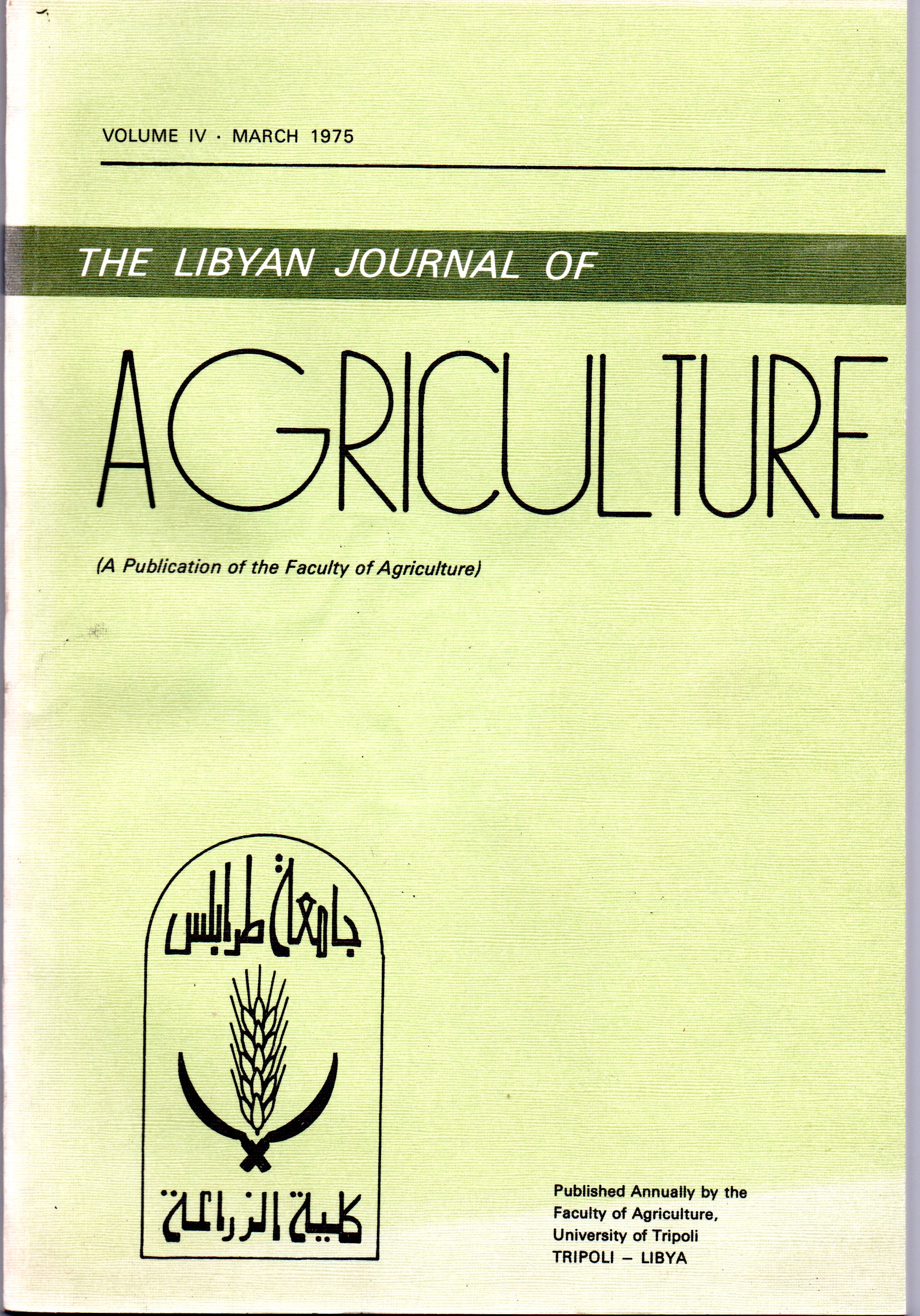Saving Eucalyptus Trees Grown in Libya
Main Article Content
Abstract
Many Eucalyptus species are well adapted to the growing conditions in Libya. They are commonly planted along roadsides, in wooded areas and as shelterbelts and windbreaks. Eucalyptus trees are considered of great national importance in Libya due to their pronounced effect in reducing heat intensity and velocity of devastating desert dry winds, locally called “Gebli’.
Unfortunately, a decline and eventual death of many well established eucalyptus trees is observed. An attempt was made through this study to investigate this problem, in order to find a suitable remedy.
It is known that eucalyptus trees are very sensitive to the lack of iron. Many Libyan soils, including Tripoli area are predominately calcareous and alkaline in reaction, where iron becomes scarce and unavailable to plants. Therefore, this investigation was conducted with the assumption that iron unavailability from the soil might be responsible for the decline of eucalyptus trees.
To elucidate this problem, five eucalyptus trees, grown at the University of Tripoli in Sidi El-Mesri, were selected for use in this study. Tree circumference ranged between 70 and 135 cm at about 1.5 m from the ground. They were showing a drastic twig die back and complete yellowing of foliage except the midribs and veins. A typical manifestation of the disorder is shown in Fig. 1 A.
Iron was supplied to trees before the onset of spring growth, in late March, using dry iron citrate. Injections were made through holes slanting toward the centre of trunk, using a hand drill. Holes were 1.8 cm in diameter and about 4 cm deep into the sapwood without reaching the heartwood.
Treatments, as presented in Table 1, were either at 10 cm or 20 cm apart around the tree circumference. At approximate height of 1.5 m, holes were alternately bored at two slightly different levels from the ground, in order to minimize any possible interference with the flow of sap. Iron compound in the citrate form was used at two different rates. After treatment, all holes including the control were sealed with grafting wax.
By periodic observations, treated trees showed signs of gradual progress and improvement of the entire plant. Regreening of the old yellow foliage and flushing new growth were evident in all four treatments within 60 days. No apparent visual differences could be detected between treatments, however, treated trees were strikingly better than control (Fig. 1A and 1B). Duration of the treatments had lasted for only two years.

